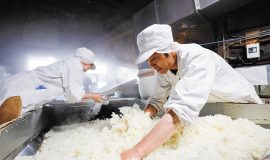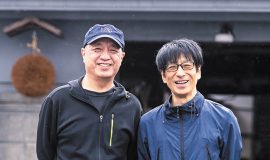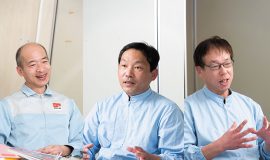Commitment to Taste that Overturns Typical Niigata Sake Profile/strong>
The brewery also has unique practices that produce a flavor profile that is atypical of Niigata style. One practice is witnessed in making koji. We were offered to taste the koji that just came out of the koji room: “Wouldn’t you say this is rather flavorful?” Indeed, it was distinctly sweet. Takeda says “Our koji is packed with flavor. This contributes to the taste of sake in the end.” First, after washing, the rice is soaked well and then dried. After steaming, the rice is sent to the koji room by a tube, exposed to heated air so the rice stays warm between 36 and 37 degrees Celsius. Once in the room, the rice gets wrapped in cloth, before koji spores are sprinkled when the temperature and the firmness of rice are deemed right. From the conditions of the koji we tasted, we assumed they used more than usual amount of koji spores, but they told us otherwise.
“We use less, if anything, because we believe the moisture distribution to each hypha would be more and that would help it grow better. We make tsuki-haze style koji (spotty growth of fungus threads on a grain) by paying attention to moisture content and temperature.”
They use mainly the coil-tube heat exchanger for pasteurization, except for premium-grade sake, which they utilize tubs to manually pasteurize in bottles. Then the bottles are stored in refrigeration, or in an ice house using snow. “Once complete, we taste the sake and if it is still young or tight, then we store it for longer. Rather than to prevent deterioration, we store to improve or mature the sake,” Iwasaki, head of brewing explained.
Not only koji making but the entire brewing process was revised once Takeda joined, and they maintain the new routine. The fact they can keep brewing Yamma, which may be characterized as a one-shot product, testifies to the soundness of methodology they have incorporated. Even without the latest equipment, it is possible to brew sake people love based on unique ideas and playfulness. Takeda’s strategy in surviving and thriving in the increasingly competitive world of sake was palpable.
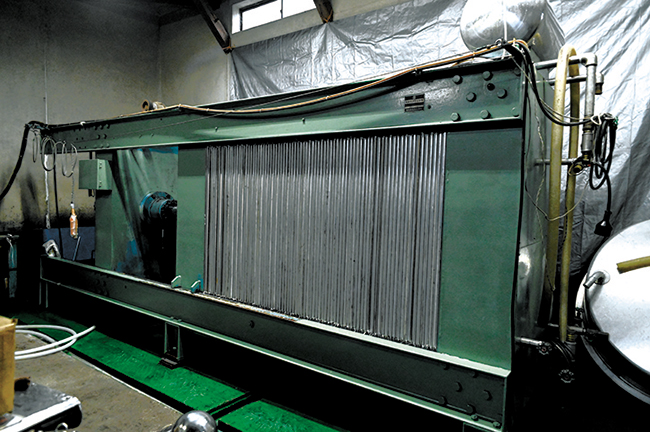
▲Yabuta Automatic Press-A. The first batch is pressed by the mash’s own force without turning on pressure, then once all the mash is transferred, slowly a 1.5 kg pressure is placed. Yamma is bottled at this stage.
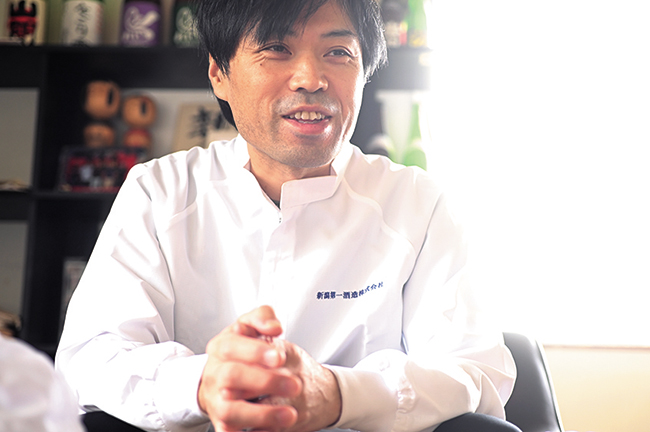
▲Yutaka Iwasaki has worked as head of brewing since 2015. “I pursue sake that people would remember, prioritizing the flavor than aroma. We try brewing in our own, authentic manner.”
Dreaming from Terraced Fields, Finally Growing Their Own Rice
In 2020, Takeda took over the management of Uragawara Agricultural Processing Association, which produces food such as miso and pickled vegetables in the area, and became senior partner. He decided to expand to rice growing by acquiring rice fields without heirs on a lease. Today, they hold 8 cho (approx. 20 acres), and grow Gohyakumangoku and Koshitanrei. Most fields are terraced on the hills, and despite its geographical inefficiency, they benefit from clean, wastewater-free environment. Takeda “had always been curious about agriculture”—we wondered how he was exploring rice production he had longed for.
“Traditionally, many brewery workers worked both in agriculture and brewing. Talking to them, I am reminded that sake brewing is founded on agriculture. And yet, agricultural industry is suffering from shortage of successors. I hope we can be part of the effort to protect rice farming.”
Takeda showed us the terraced fields. Rice paddies hug a hillside far above houses. As the brewery is trying to expand export these days, they often invite buyers to see the rice paddies. Because many understand domaine in the wine industry, they respond well once they see the agricultural landscape. Takeda feels he is heading in the right direction, and told us what his goals were.
“We want to create new products every year, and explore different ways to market them. At the same time, we will increase our effort in rice cultivation as well.”
Niigata Daiichi Shuzo has been making an impact in the industry with their innovation and capacity to follow through. We cannot wait to see how the next phase of their dreams unfold.
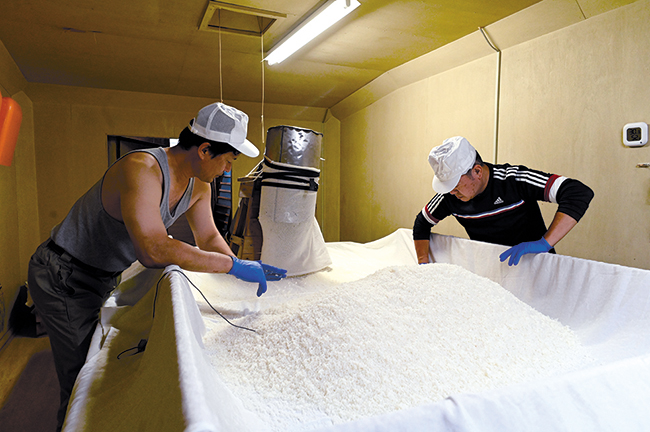
▲There are two rooms for making koji, one to bring in koji and another for layering koji thin in the latter part of the koji making process. Previously, they used trays but have transitioned to the covered table method once they improved their skills to bring about the same results.
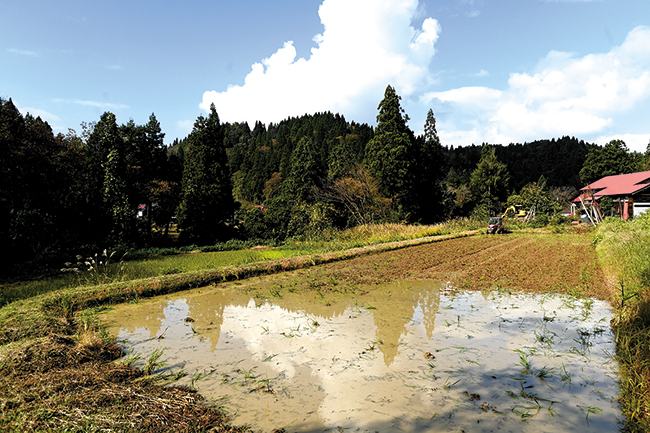
▲Rice cultivation is undertaken by the farming wing of Uragawara Agricultural Processing Association. The day we visited, they were ploughing and irrigating the paddies before the snow. Joetsu City experiences heavy snow, and irrigation helps maintain the soil soft so that work in spring is easier.
Pubulish at : 2024.04.25
Book :
-
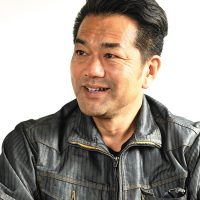
-
新潟第一酒造株式会社
代表取締役社長
武田 良則
- 新潟県上越市浦川原区横川660番地
- 025-599-2236
- 設立1922年
- https://www.hakucho-sake.com
1970年生まれ。都内の大学を卒業後、父が社長を務める新潟第一酒造に営業担当として入社。自社の酒造りを見直すべく、酒類総合研究所での研修を経て、1999年に醸造責任者となる。2006年には蔵人制を廃止し、年間雇用の社員のみでの酒造りに切り替えた。その後、2008年に代表取締役社長に就任。2015年には醸造責任者を引退するも、昨年は三千櫻酒造とのコラボ商品「みちやんま」を責任醸造するなど、新たな企画にも精力的に取り組んでいる。
Photographer takeo shimizu
1 2


